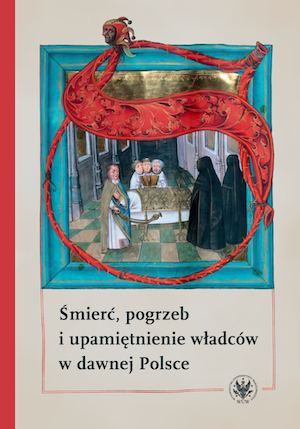Śmierć władcy jako zakłócenie naturalnego porządku rzeczy
The Death of a Ruler as Disruption of Natural Order
Author(s): Urszula Augustyniak
Subject(s): Middle Ages, 6th to 12th Centuries, 13th to 14th Centuries, 15th Century, 16th Century, 17th Century, 18th Century
Published by: Wydawnictwa Uniwersytetu Warszawskiego
Keywords: death; ruler; propaganda; posthumous image
Summary/Abstract: The article discusses the death of a king as a possessor of power, which is seen as political death. The author attempts to present how posthumous images of Polish kings: Sigismund II August, the last from the Jagiellonian dynasty, and Sigismund III, the first from the Vasa dynasty, were created. She assumes that creating a model image of death can be considered the main factor differentiating death of a ruler as a political leader from death of ordinary people. She distinguishes three phases of political death: 1. the impossibility of personal ruling and its transfer to favourites; 2. focusing on the successor, 3. the media mourning after king’s death, 4. oblivion of the ruler’s death and return to current matters. The author concentrates on observing the evolution of Polish nobility’s attitude to king’s death, seen as political change of quasi-religious character; on questioning immortality of God’s Anointed and in the secular dimension, on questioning his indispensability to the functioning of state and legal order. The interregna were treated not only as disasters, but also as a chance to restore the natural order by the nobility which assumed the majesty of Poland.
Book: Śmierć, pogrzeb i upamiętnienie władców w dawnej Polsce
- Page Range: 15-29
- Page Count: 15
- Publication Year: 2020
- Language: Polish
- Content File-PDF

